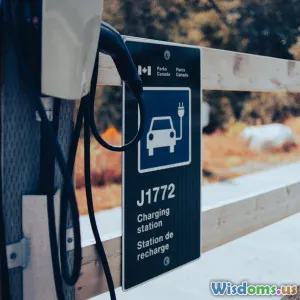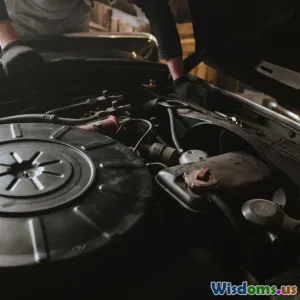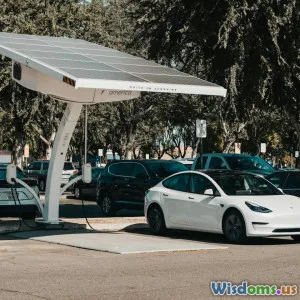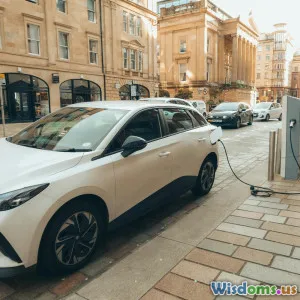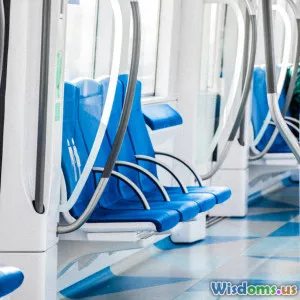
Innovations in Public Transit Technology
6 min read Explore the latest advancements in public transit technology that enhance efficiency, accessibility, and sustainability. (0 Reviews)
Innovations in Public Transit Technology
Public transportation has long been a vital component of urban infrastructure, facilitating the movement of millions of people daily. As cities grow and technology advances, public transit systems must adapt to meet new challenges and expectations. This article explores groundbreaking innovations in public transit technology that enhance efficiency, accessibility, and sustainability.
1. Smart Ticketing Solutions
One of the most significant advancements in public transit technology is the introduction of smart ticketing systems. These systems allow passengers to purchase tickets using smartphones, contactless cards, or mobile apps, which streamline the boarding process and reduce wait times.
Key Features:
- Contactless Payments: Passengers can tap their cards or smartphones on readers, eliminating the need for cash transactions.
- Unified Payment Systems: Many cities now offer integrated platforms that allow users to pay for various modes of transportation—buses, trains, and even bike shares—using a single app.
Benefits:
- Increased Convenience: Smart ticketing simplifies the travel experience, making it easier for commuters to use multiple forms of transit without juggling different tickets.
- Data Collection: Transit agencies can gather valuable data on travel patterns, helping them optimize routes and schedules.
2. Electric and Hybrid Buses
The shift towards electric and hybrid buses is another significant innovation in public transit. These vehicles not only reduce greenhouse gas emissions but also lower operating costs over time.
Advantages:
- Environmentally Friendly: Electric buses produce zero tailpipe emissions, contributing to cleaner air in urban areas.
- Reduced Noise Pollution: Electric buses operate more quietly than diesel buses, improving the overall urban environment.
- Lower Operating Costs: Though the initial investment may be higher, electric buses have lower fuel and maintenance costs, leading to long-term savings.
3. Real-Time Tracking and Information Systems
Real-time tracking technology has revolutionized the way passengers interact with public transit systems. With GPS-enabled vehicles and mobile applications, passengers can access live updates on transit schedules and vehicle locations.
Features:
- Mobile Apps: Many transit agencies offer apps that provide real-time information, allowing passengers to plan their journeys effectively.
- Digital Signage: Bus stops and train stations now feature digital displays showing arrival times and service alerts, improving communication with commuters.
Benefits:
- Enhanced Reliability: Real-time information helps passengers make informed decisions, reducing anxiety and wait times.
- Increased Ridership: When people can see that transit is on time and reliable, they are more likely to use it.
4. Autonomous Transit Solutions
The development of autonomous vehicles is slowly making its way into public transit. While fully autonomous buses are still in testing phases, pilot programs are exploring their potential.
Potential Impact:
- Increased Safety: Autonomous vehicles can reduce accidents caused by human error.
- Cost Savings: With fewer drivers needed, transit agencies could save on labor costs.
- Accessibility: Autonomous shuttles can provide essential services in areas underserved by traditional transit.
5. Mobility as a Service (MaaS)
MaaS represents a paradigm shift in urban mobility, integrating various transportation services into a single accessible platform. This approach allows users to plan, book, and pay for multiple modes of transport in one seamless experience.
Benefits:
- User-Centric Design: MaaS prioritizes the user's experience, providing options that best suit their travel needs.
- Environmental Benefits: By promoting shared mobility solutions, MaaS can reduce the number of single-occupancy vehicles on the road.
Conclusion
Innovations in public transit technology are reshaping the way we navigate urban environments. From smart ticketing systems to electric buses and real-time tracking, these advancements are making public transportation more efficient, accessible, and sustainable. As cities continue to evolve, embracing these technologies will be crucial in meeting the demands of future mobility and fostering a more inclusive urban landscape.
By investing in these innovations, cities can not only enhance the public transit experience but also contribute to a healthier planet and improved quality of life for all residents.
Rate the Post
User Reviews
Popular Posts










